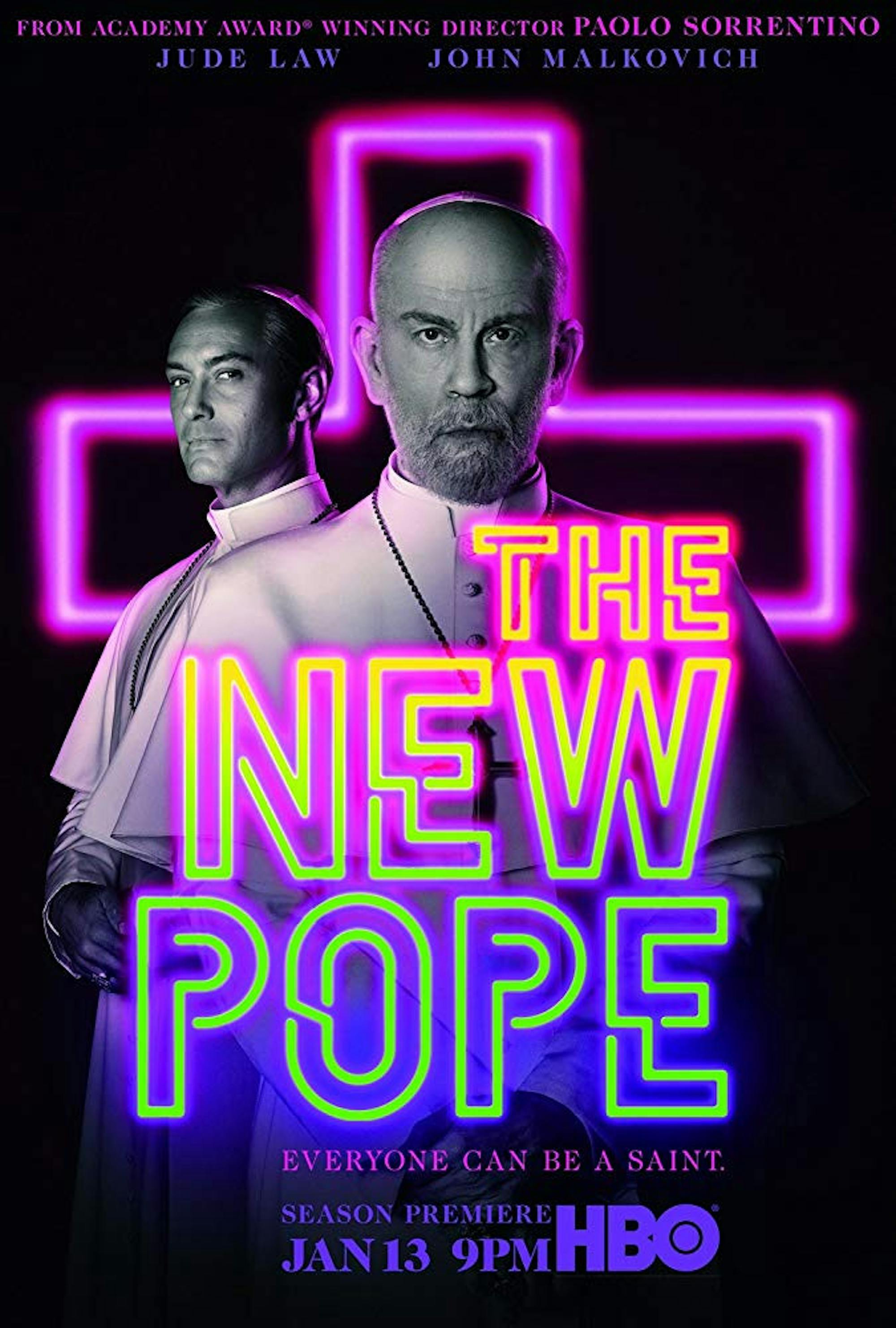After a three-year wait, a cloud of white smoke appeared from HBO's office and just like that the people knew that "The New Pope" (2020–) was on TV. While technically considered a follow-up, it is essentially the sequel to Paolo Sorrentino's "The Young Pope" (2016).
"The New Pope" picks up soon after where "The Young Pope" left off. Nine months after Pope Pius XIII falls into a coma after suffering a heart attack, with no figure to symbolize the leadership of the church, Cardinal Voiello finally decides that it's time for a new pope to be elected.
While the placement of politics into the church is a considerably easy opportunity to make a statement on both institutions' similar dominance by egomania and backroom power-broking, the opportunity is masterfully executed. Voiello puts in a puppet pope who will essentially follow his direction. Sadly, it backfires. The pope elect, Francis II, quickly realizes the power at his fingertips and utilizes it by enacting radical change. Francis forces all of the cardinals to give up their life of luxury and give back to the less fortunate; he forces the cardinals to give up all of their jewelry and gold crosses, and even more radically opens the doors of the Vatican to refugee immigrants.
To force the Vatican and the leaders inside it to sacrifice in the name of service doesn't feel radical — so much of Christianity preaches about love and charity — but as we see the hesitancy of the cardinals, especially Voiello, the church is exposed for its selfishness. Shortly after, we learn that Francis's motives are no more innocent. The radical decisions are just as much about helping as they are about having the power to take away the cardinals' lavish lifestyle and receive praise from the public. This level of nuance further indicts the church; in Sorrentino's mind, no act is purely motivated and no one is free of sin. The season premiere ends with the most powerful figure, ironically not God in this circumstance, smiting down Francis II, a final twist in the show's criticism of how power taints Catholicism.
The premiere episode is a fantastic hour of television. The radical style, its use of montage, vibrant color, modern music and its open commentary on the church clashes with its incredibly traditionalist subject, Catholicism and the Vatican, in a way that creates sparks. Nothing better encapsulates this than the confounding intro where a giant neon-lit cross strobes as nuns dance in slow motion to house music in front of it. These elements combined should not work in any way, but because of its clear message, the style feels purposeful and the episode clicks.
In comes John Malkovich to save the day. Anyone who had seen any content about the show before it aired knew Malkovich was going to be on the show, but to make them wait until the second episode for his arrival only built up anticipation. Normally known for his flourish and overacting, Malkovich is no different here, but the overacting isn't nearly as loud as it normally is.
Malkovich's character, Sir John Brannox, is an English priest whose remorse and sadness prominently hang like a cloud not only over himself but also the entire room. The second episode is spent with Voiello and his cardinal entourage visiting Brannox and trying to convince him to become ‘the new pope’. Brannox in turn questions Voiello about the Vatican and Catholicism. Brannox admits that the death of his twin brother Adam still haunts him and has made him much more fragile, so he is hesitant to take on the role.
The second episode feels like a turn from the first episode. It is much more still and quiet, signaled by the lack of a true montage sequence and its use of more classical music, but the characters are more honest about their true desires and motivations. It is enigmatic, somber and split between comprehensible and confounding, encapsulating the character that dominates it, John Brannox.
All in all, it seems like "The New Pope" is worth sticking around for. The second episode, especially in pair with the first, makes it seem like the show is attempting to not just mock the church but seriously interrogate it and its devout faith. More importantly, it is injected with a lively and effective style that feels thoughtful about the themes of the show. Those intrigued by "The New Pope" should definitely make the time for it.
One pope, two popes, red pope, new pope

A promotional poster for "The New Pope" (2020–) is pictured.
Summary
The radical style, its use of montage, vibrant color, modern music and its open commentary on the church clashes with its incredibly traditionalist subject, Catholicism and the Vatican, in a way that creates sparks. All in all, it seems like "The New Pope" is worth sticking around for.
4 Stars





